This story (in Chinese) was first published in the World View magazine.
This English version was translated from the Chinese original using DeepL, with the manual correction of some obvious mistranslations. I apologize for any mistakes made by this AI translation tool.
A sudden military coup at the start of the 2021 New Year has put Myanmar, a country that has always been obscure, in the global spotlight for a while.
This is actually not the first military coup that Myanmar has experienced; the military government was in power, directly or indirectly, in the country for 53 years from 1962 to 2015. During this period, Myanmar’s economic development was stagnant for a long time, making it still one of the poorest countries in Southeast Asia and the world, yet a large number of buildings from the British colonial period at the beginning of the last century have thus escaped a century of urban renewal and have been preserved intact.
Being born in one of the most European cities in China: Qingdao Old Town, I have an indescribable affection for the various old colonies. The old houses in the various colonial towns are full of European style, with a beauty that is far beyond the reach of the square modern buildings, but at the same time, they seem to be silently telling the bitter and humiliating history. I had known that Burma had been colonized by the British for over 50 years before World War II, and visiting the colonial ruins was an important part of my trip to the country. But when I actually came here, I was surprised by the number of relics and how well preserved they were.
Maymyo, travel to a 19th century English town
Almost all of my memories of the old English countryside come from the movie Pride and Prejudice. Elizabeth’s simple home, Darcy’s luxurious manor house, and the smell of grass and earth that seems to come through the screen, is all I can imagine. All this imagination came to life in Maymyo (aka Pyin Oo Lwin), just 2 hours away from Mandalay.

The guidebook said it was a popular holiday town for the British colonists, and at first I just assumed it was an ordinary Burmese town with a few old buildings left standing. But the moment I got out of the car, I couldn’t tell if it was Burma or 19th century England – the dusty paths were lined with rampant weeds and had a distinctive aroma, and inside the old 19th century style walls was an old church with a red color as if it had just been painted. The carriages that wander through the streets, built in the traditional manner, with the clattering of the horses’ hooves, transform this still image into a vivid movie scene.
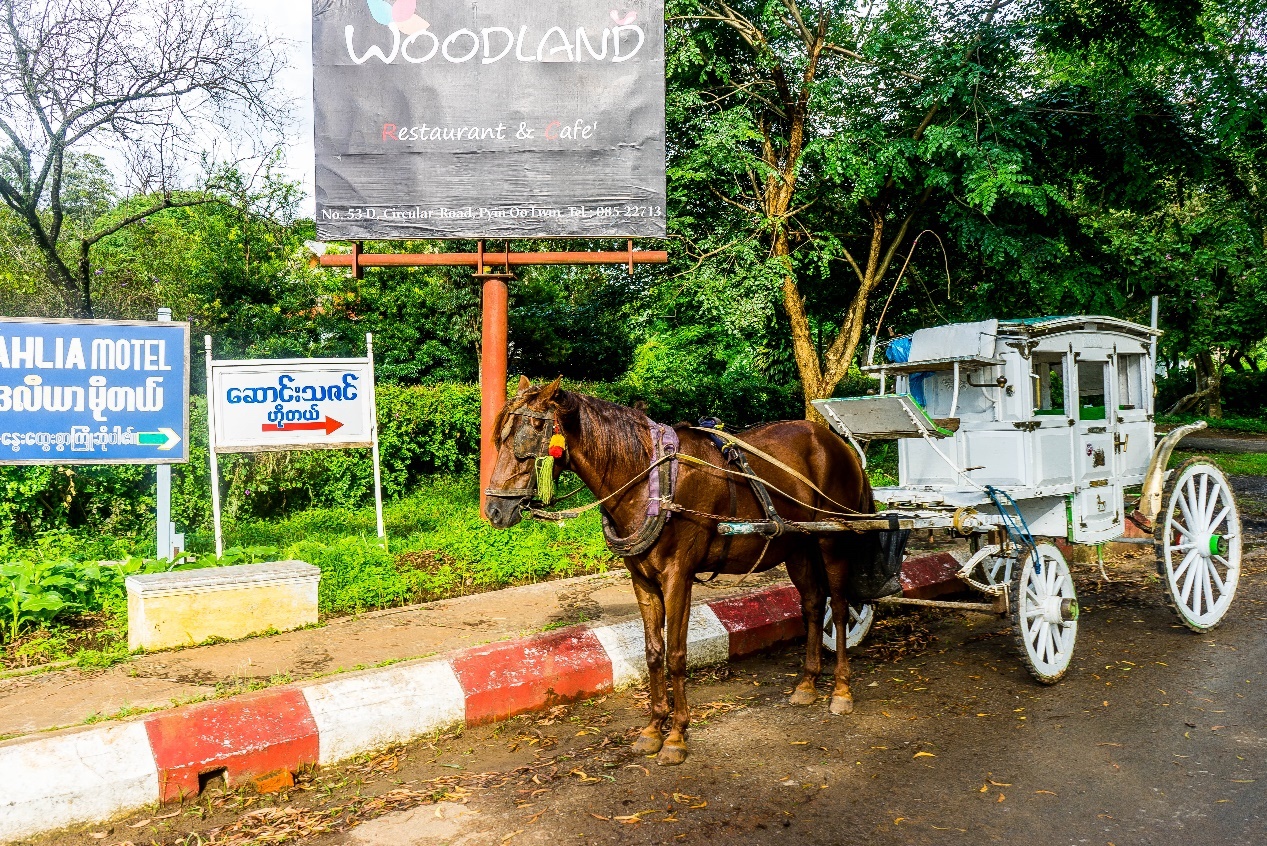
Riding the inn’s free bike, I spent the afternoon taking an in-depth tour of the area, not wanting to miss a single street. In fact, every street surprised me in a new way. The most surprising thing was the condition of the houses; you couldn’t tell that most of them had been there for a century, everything looked like it had just been built, but the style was still 19th century, so you could hardly help but think you had travelled back in time. Looking into the current use of these houses, it turns out that they were either government offices or wealthy residences, or at worst, high-end restaurants, so it’s no wonder they were so well maintained.
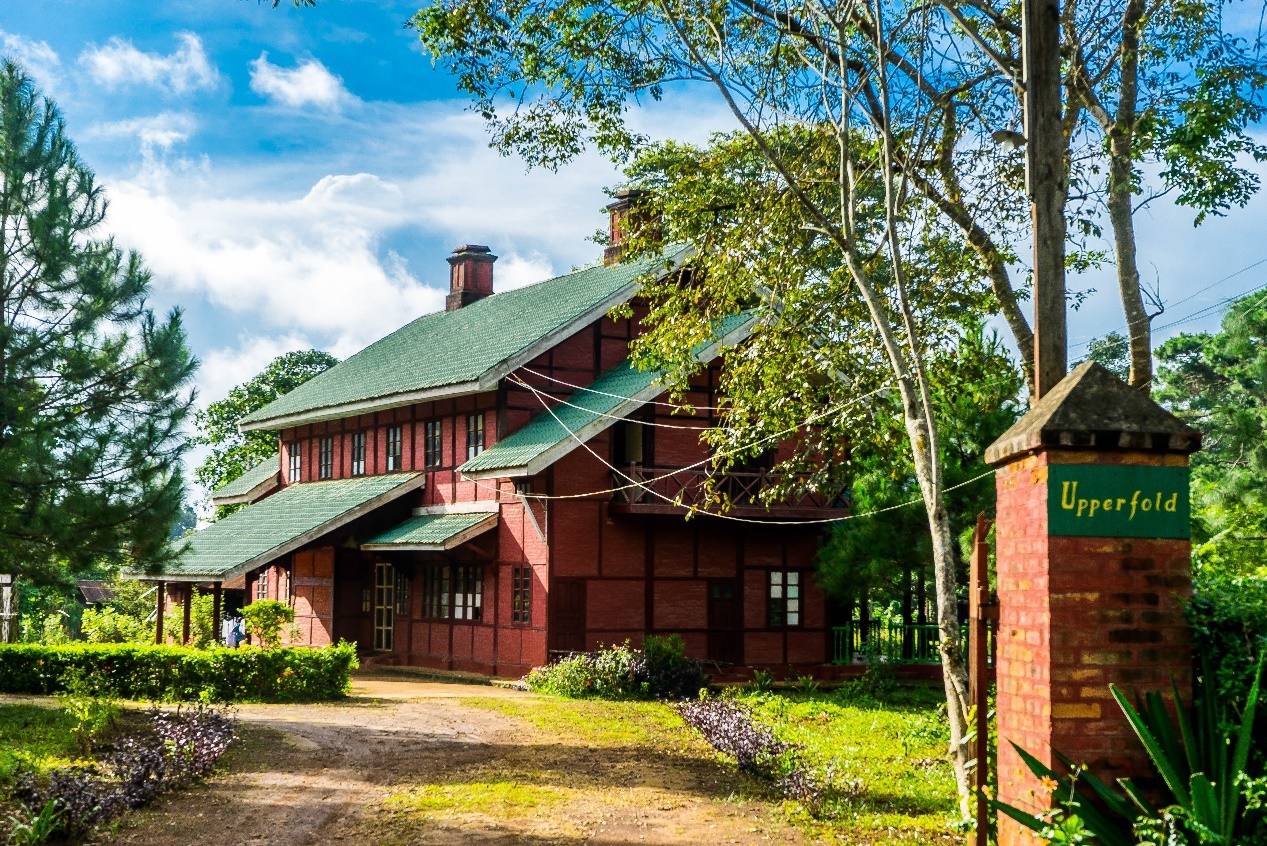
The “upscale restaurant” recommended in the book is located in an old house that used to be a private residence, and even the courtyard attached to it has been kept intact. It’s called “upscale”, but a set meal is only about 20 yuan, cheaper than many street stalls in China. But the courteous service of the well-trained waiters and the well-decorated dining environment make even a single person eating here a pleasure – that’s all the British colonists got a hundred years ago. The only “non-simulation” here (and I’m glad for that) is that the menu is not a bad English fish and chips, but authentic and delicious Burmese dishes.
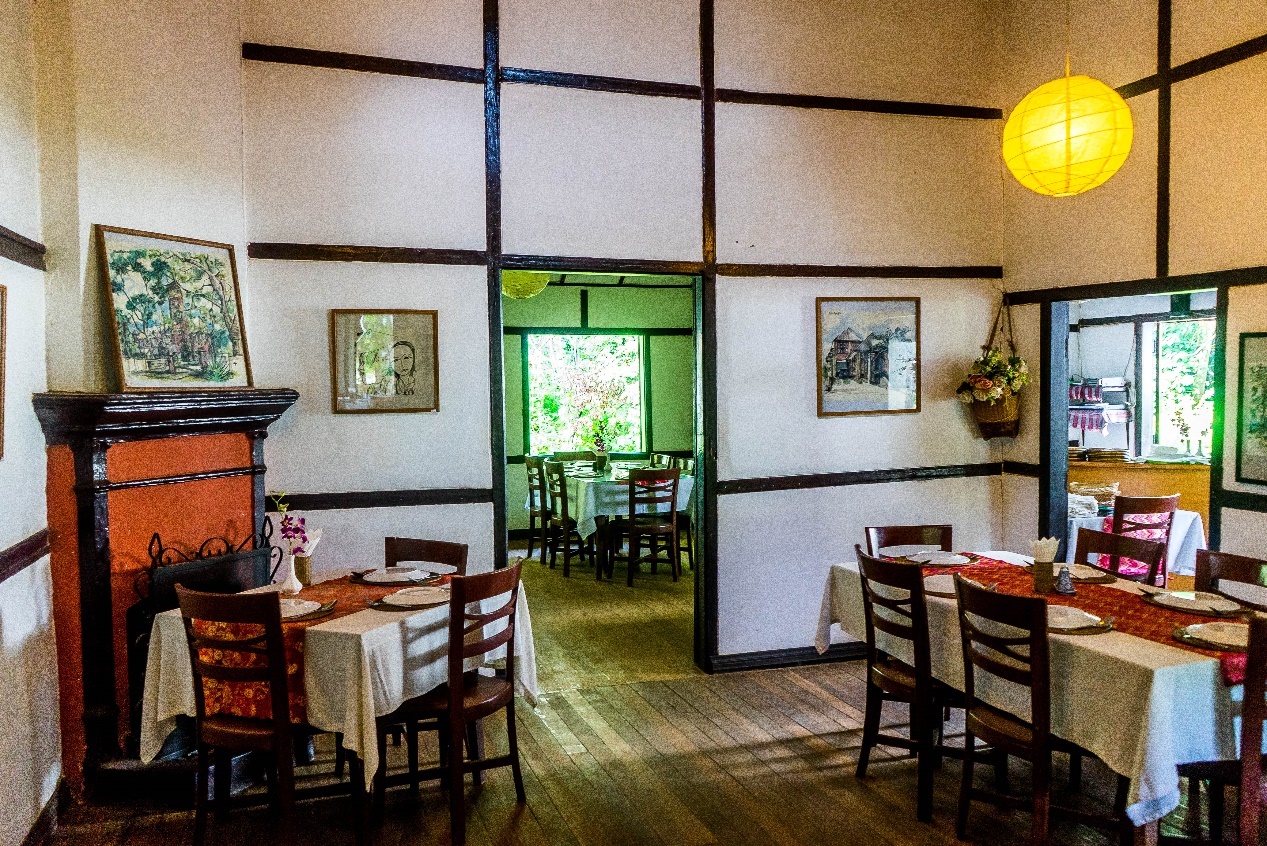
Passing a private school, rows of cars pull up in front of the entrance and maids skilfully pick up the school bags of children who have just been dismissed from school and drive home. And the child in the passenger seat, nibbling on a snack, a smile on his face. Is this what life is like for the locals?
“Thanks” for riding the wrong way on the return trip and accidentally turning into a slum. In an instant, it went from an “English town” to a garbage filled, sewage filled, stinky place. The two sides were full of recklessly built tin and even bamboo houses, so it was difficult to keep the wind and rain out. There was hardly a single piece of decent furniture in the houses, and the owners were naturally in rags and filth. But what surprised me was that even though life was already so difficult, the people here, without exception, greeted me loudly with smiles on their faces.
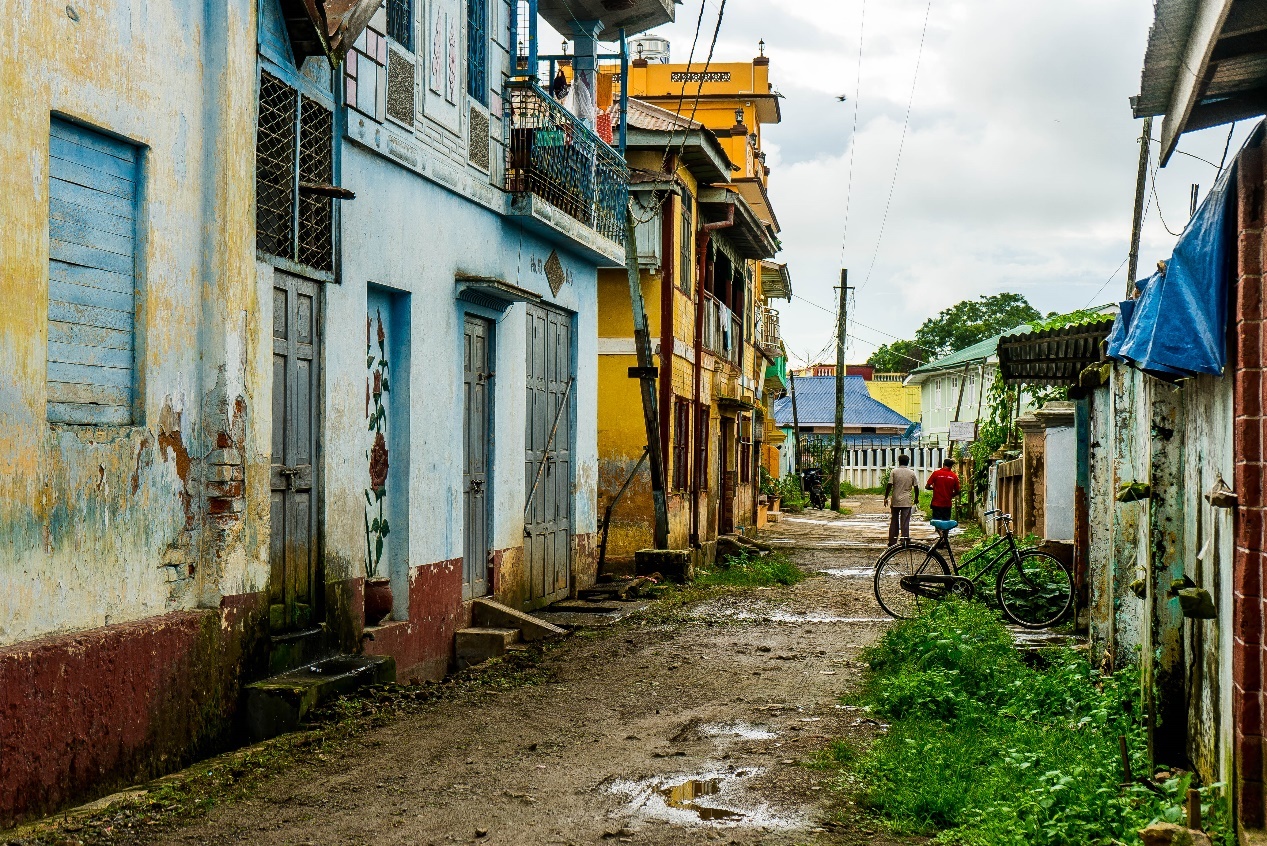
This kind of friendliness doesn’t only exist in the slums. Walking down the street, I even had a passerby who was in a hurry stop and ask me in English if I needed help, and then enthusiastically recommend a good hidden place nearby. With such a wide gap between the rich and the poor, one can’t help but feel that a common faith and smile is what binds all Burmese together.
And what surprised me more than the town itself was the botanical gardens on the outskirts. The $5 entrance fee for foreigners is dozens of times the price for locals, and I’ve never felt that any of the tickets were such good value – it took me an entire morning to wander the place in its entirety. The entire garden is intact as it was a hundred years ago, even including that ineffable aristocratic air.
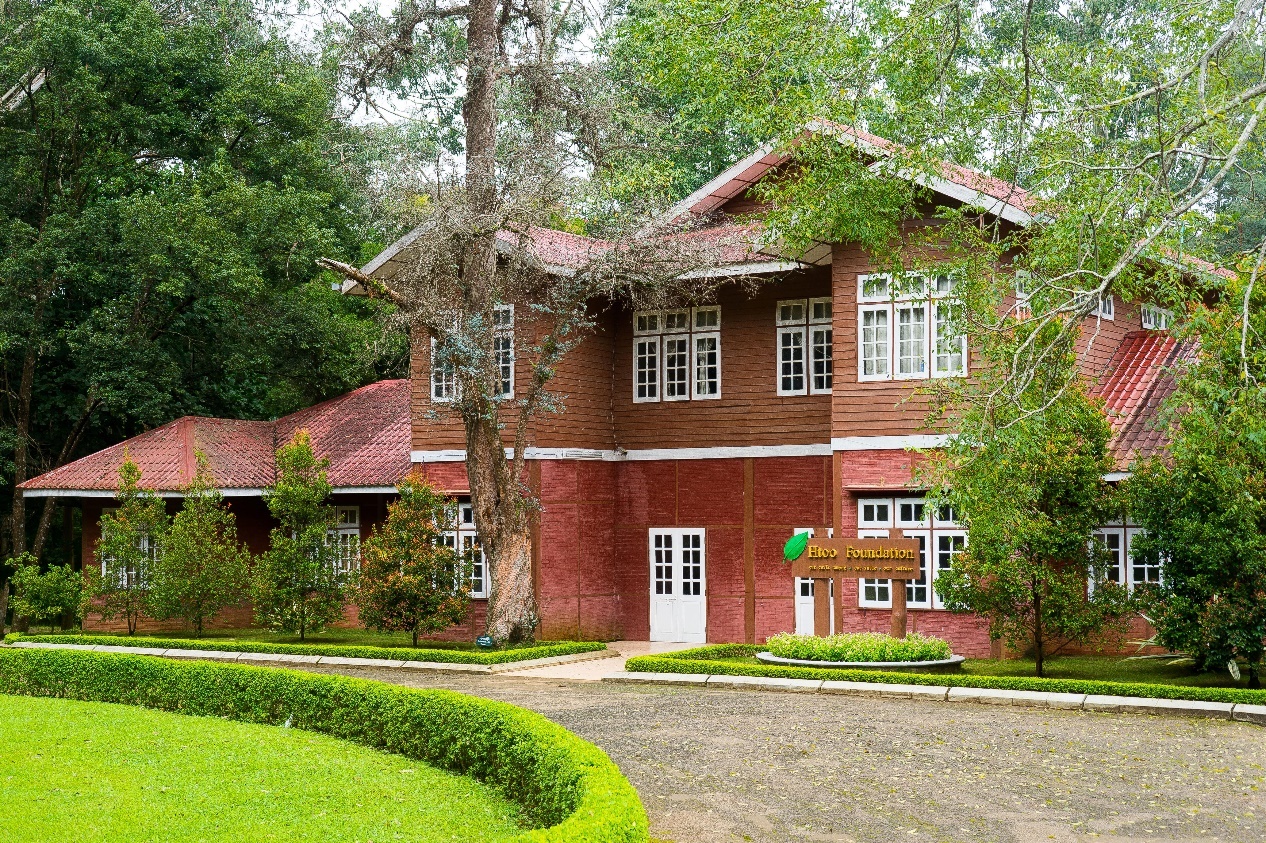
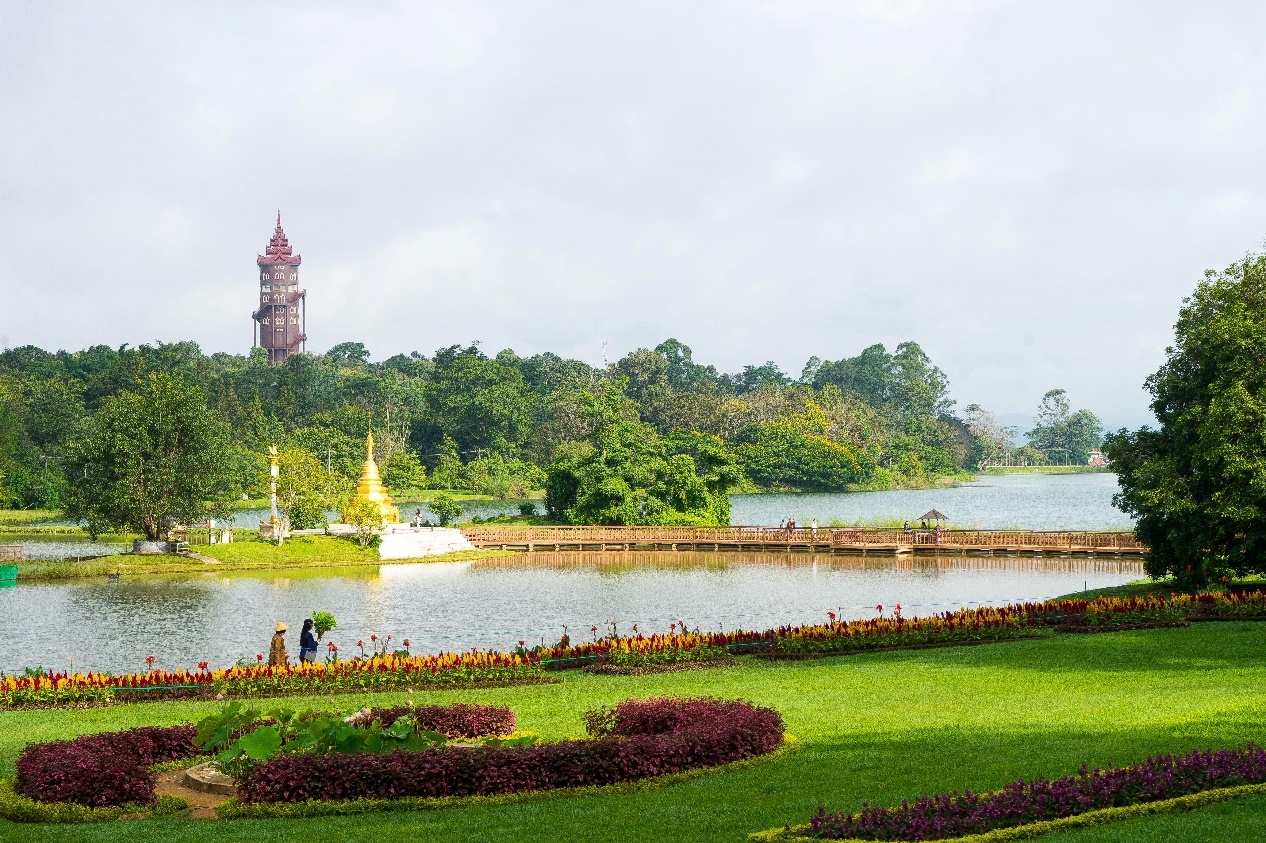
First I had a nice breakfast at the best location in the park, with the emperor’s view, and spent only 15 RMB on food and drinks. Then I spent all my time lingering in the mountains and lakes, buying a large cup of ice cream for $3 and sitting by the lake while watching the flocks of black and white swans swim back and forth, even coming up to the shore to “say hello” without fear of me.
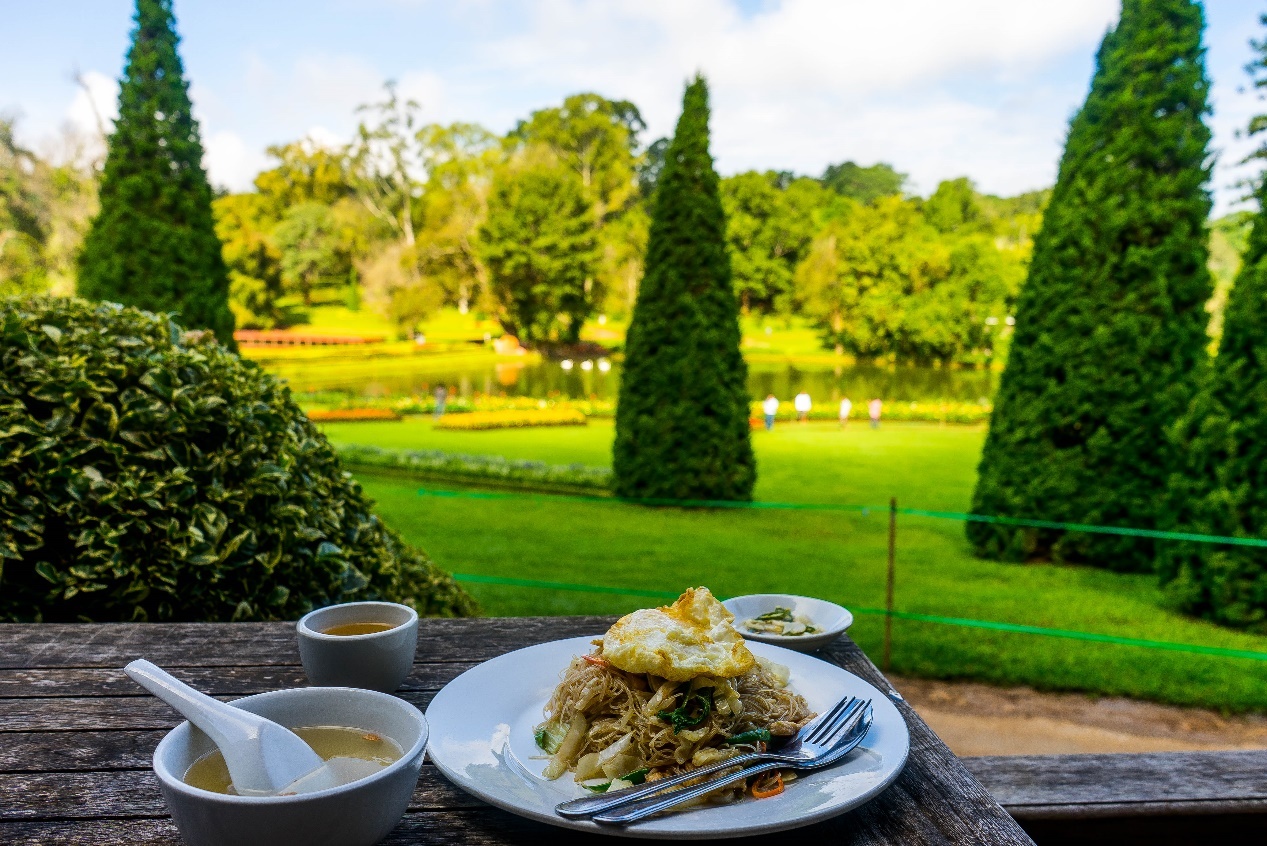
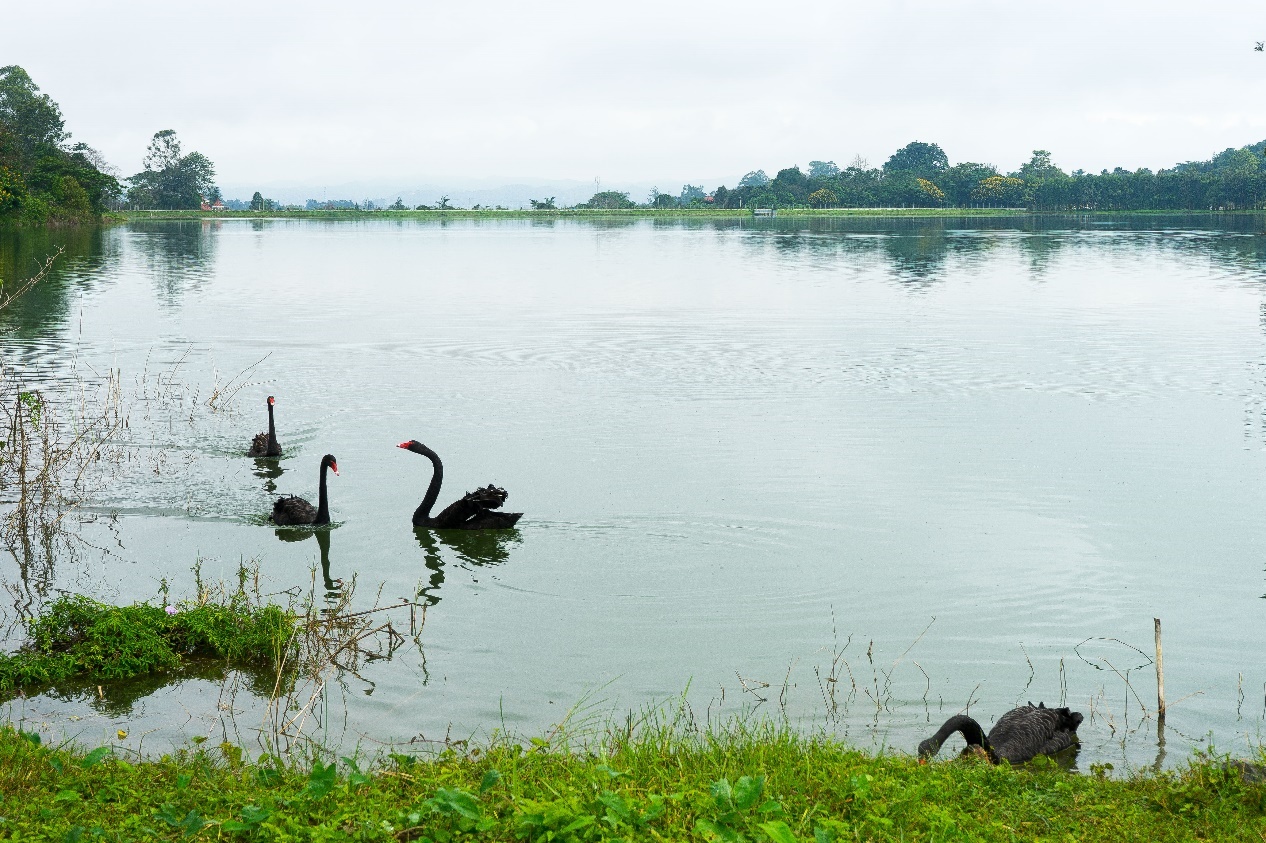
Located on a high plateau, Maymyo was a summer resort a hundred years ago and was the only place in Myanmar where I didn’t feel the heat at all on my trip. Even after a long sit or walk here, there was only a cool breeze and no heat at all, which is a rare sight in Southeast Asia throughout the summer.
Yangon, the sealed British metropolis of 20th century
I was attracted by a set of “old and new Yangon pictures”: two pictures of the same Sule Pagoda in the center of Yangon’s old city, a full 100 years apart, yet everything has not changed in a hundred years, except that the street saplings planted then have grown into huge trees, and the transportation on the street has changed from horse-drawn carriages and rickshaws to modern cars. Everything as far as the eye can see has not changed at all in a hundred years!

The poverty and isolation of Myanmar today makes it hard to believe that a century ago the most prosperous city in Southeast Asia was not Singapore or Bangkok, but Yangon. The British Empire, in its final glory, vowed to make Yangon the “colonial capital of Southeast Asia”, leaving it with countless European-style buildings. If Meemaw is a “British town”, Yangon, the colonial capital, is the “British capital”. The city, of course, has a large cluttered and mediocre new town and even modern industrial areas on the outskirts, but this does not detract from the fact that almost all of the buildings in the old British colonial town are still intact.
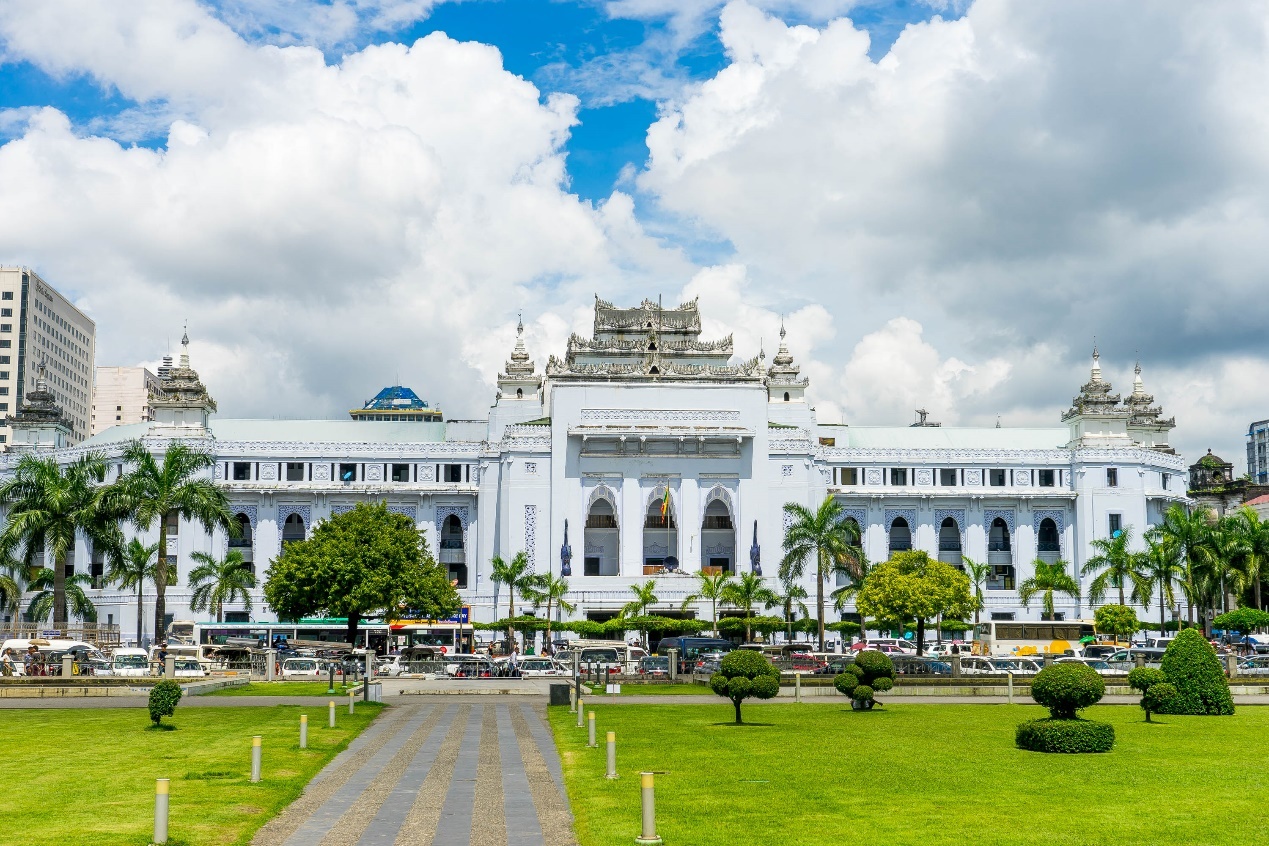
Compared to Meimu, the buildings here are much more majestic and naturally more diverse in their use, and they have been treated differently by different owners, from the shiny new ones like Meimu to the less well-maintained ones with vines growing out of the mottled walls. It was a sight as if the humans here had suddenly disappeared for 100 years.
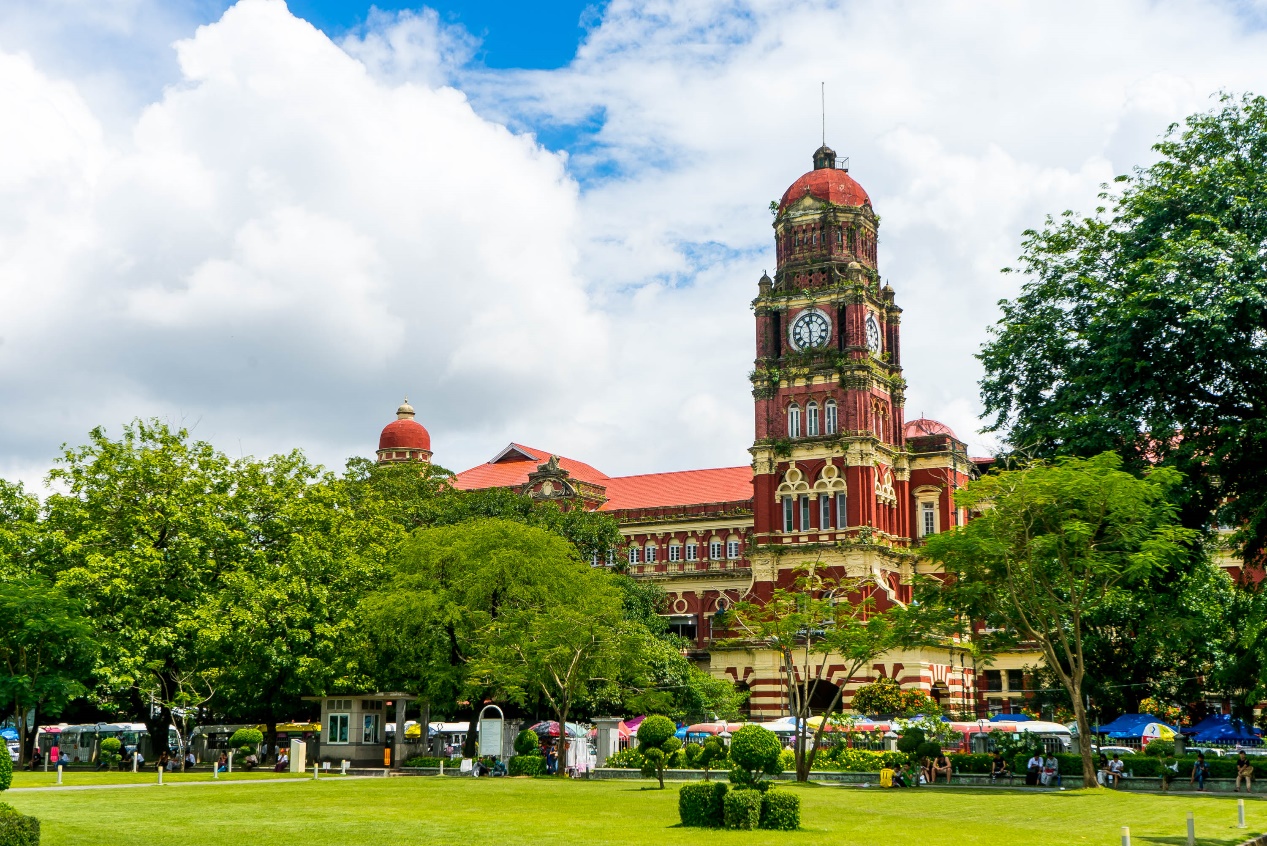
Regardless of the standard of maintenance, the buildings here are actually all “living” – the post office a hundred years ago, is still the post office; a hundred years ago, the customs, is still the customs; ordinary people can only look at the “building The luxury hotel that ordinary people can only sigh at the “building”, now …… still can not afford to stay. The reason for this, naturally, is that the accumulated poverty and weakness of Myanmar can not afford to build, and can not build a more suitable new house, right?
With hotels unaffordable and customs inaccessible, the post office building is the perfect place to experience the old building. I don’t know if you’ve ever seen the old post office in a movie, but this is it, even the sound of customers clamoring in the spacious hall is exactly the same. There was once such an old post office left by the Germans in Qingdao, and I still have vague memories of what it was like when I was a child, but since everyone happily demolished the old post office and replaced it with a dozens of storey high commercial building, that memory will never be restored. Thanks to Yangon, I was able to return to the old post office of my childhood.
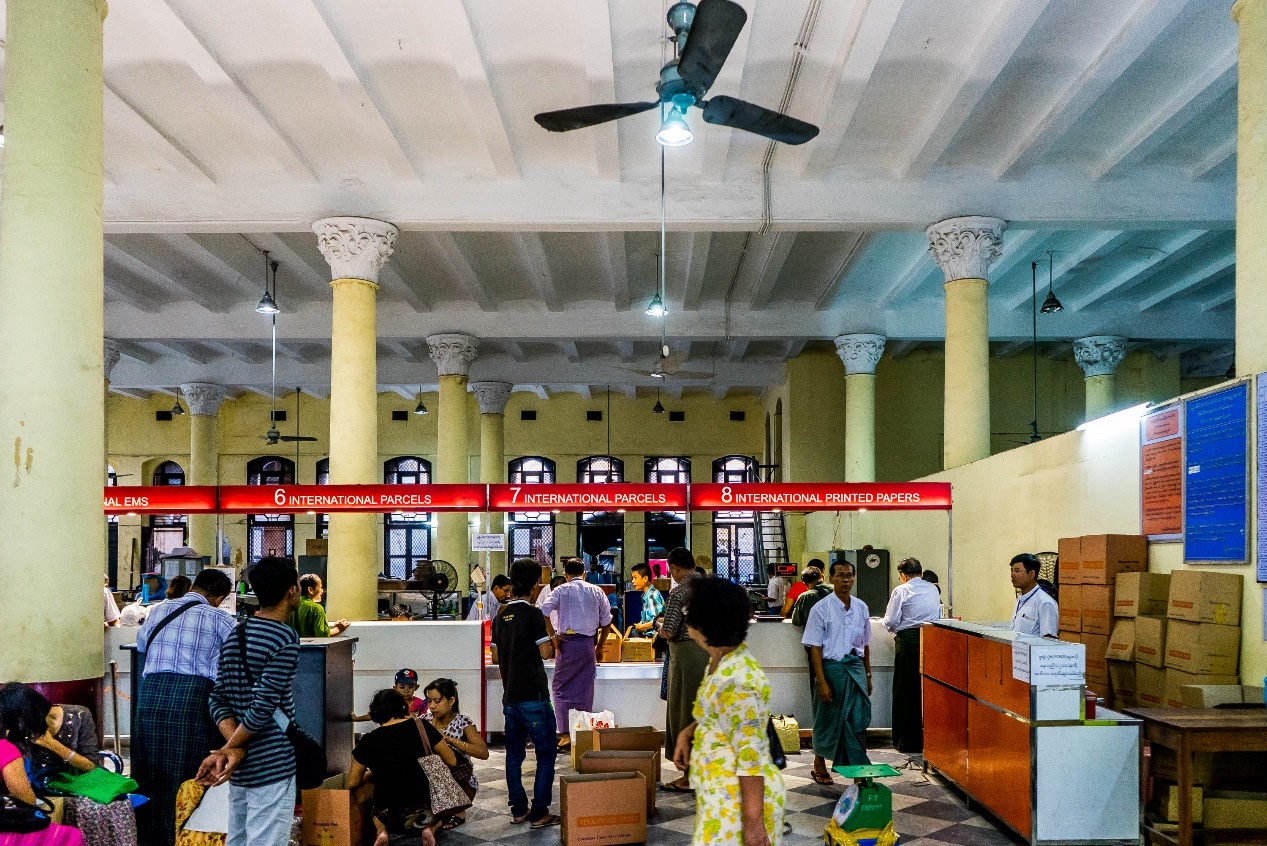
In addition to the distinctive “Indo-Gothic” British colonial architecture of the period and region, Yangon’s Old City is also full of other styles. Today Yangon is the most religiously diverse city in the world. Here you can easily find traces of Buddhism (Southern and Chinese), Hinduism, Judaism, Christianity (Roman Catholic, Anglican, Baptist and even Armenian ……) based on the distinctive architectural styles.

I am well aware that Yangon’s old buildings have been preserved before as a complete fluke of economic stagnation. But with the end of military rule and the foreseeable future economic take-off, it was inevitable to fear a repeat of China’s mistakes in the 1990s – the demolition of precious old buildings as the price of skyscrapers rising from the ground. To my surprise and relief, I found a foundation dedicated to the preservation of Myanmar’s old town and a small, well-decorated exhibition hall in an unassuming corner of the old city.
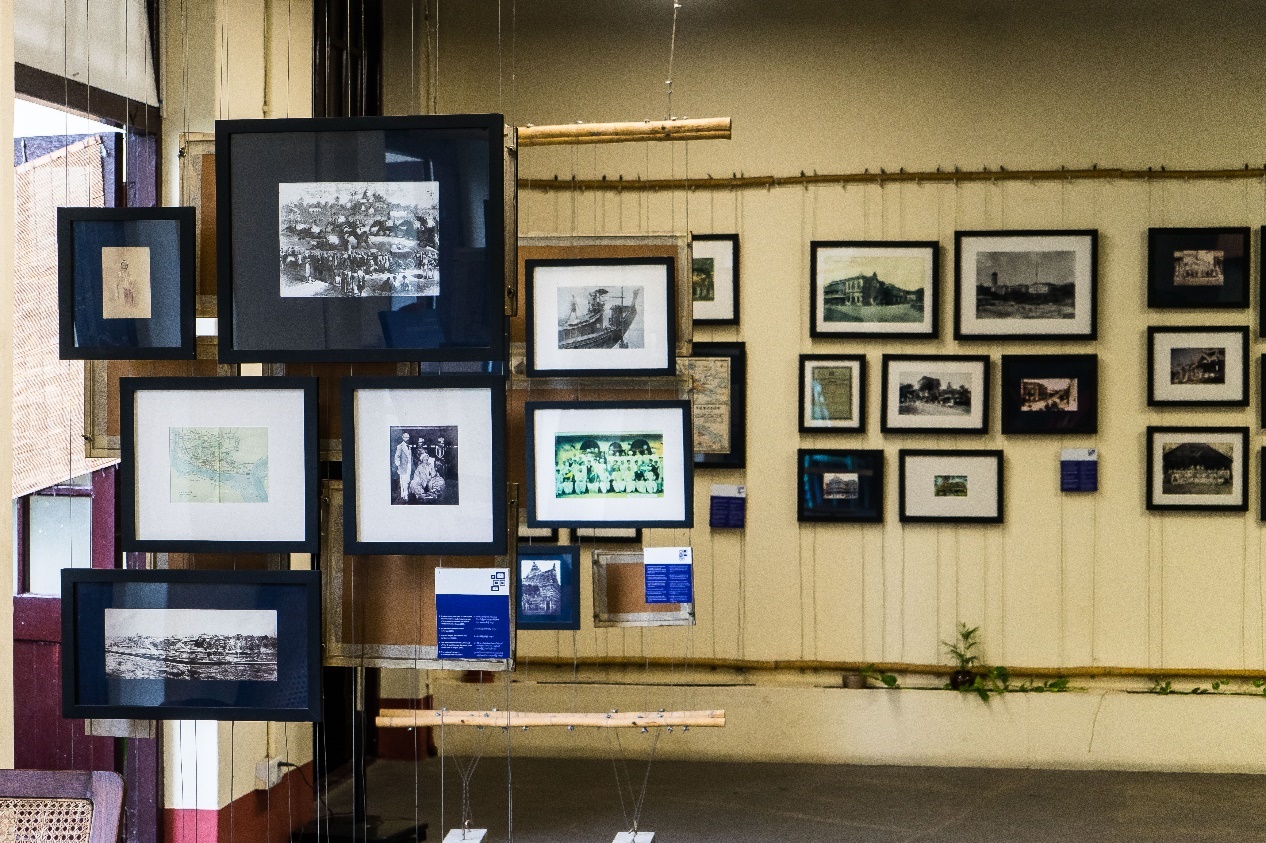
I found the foundation staff for a brief chat, and I was not surprised that none of them were Burmese. They admitted to me that their power is still too small to influence government decisions in many cases, and that they do not even have the support of ordinary people in Myanmar (much like China in the 1990s), but they will keep trying.
When I left, I didn’t hesitate to donate 10,000 kyats (about $8), which was almost the cost of my meal for the day, but so willingly. I just hope that when I return to the city for the second, third, or even tenth time, I will still see the same street scenes and find the same memories.
Mawlamyine, a college campus in a drab old house
Mawlamyine is the third old colonial Burmese town I planned to visit, and after the beauty of Maymyo and the majesty of Yangon, most of the buildings here hardly gave me anything new. I was about to go back to bed when I unexpectedly turned into a courtyard. The old buildings in the courtyard were not only drab, but they were also covered with a thick layer of black water stains from years of rain and lack of maintenance. The scene, being there, felt a bit magical.
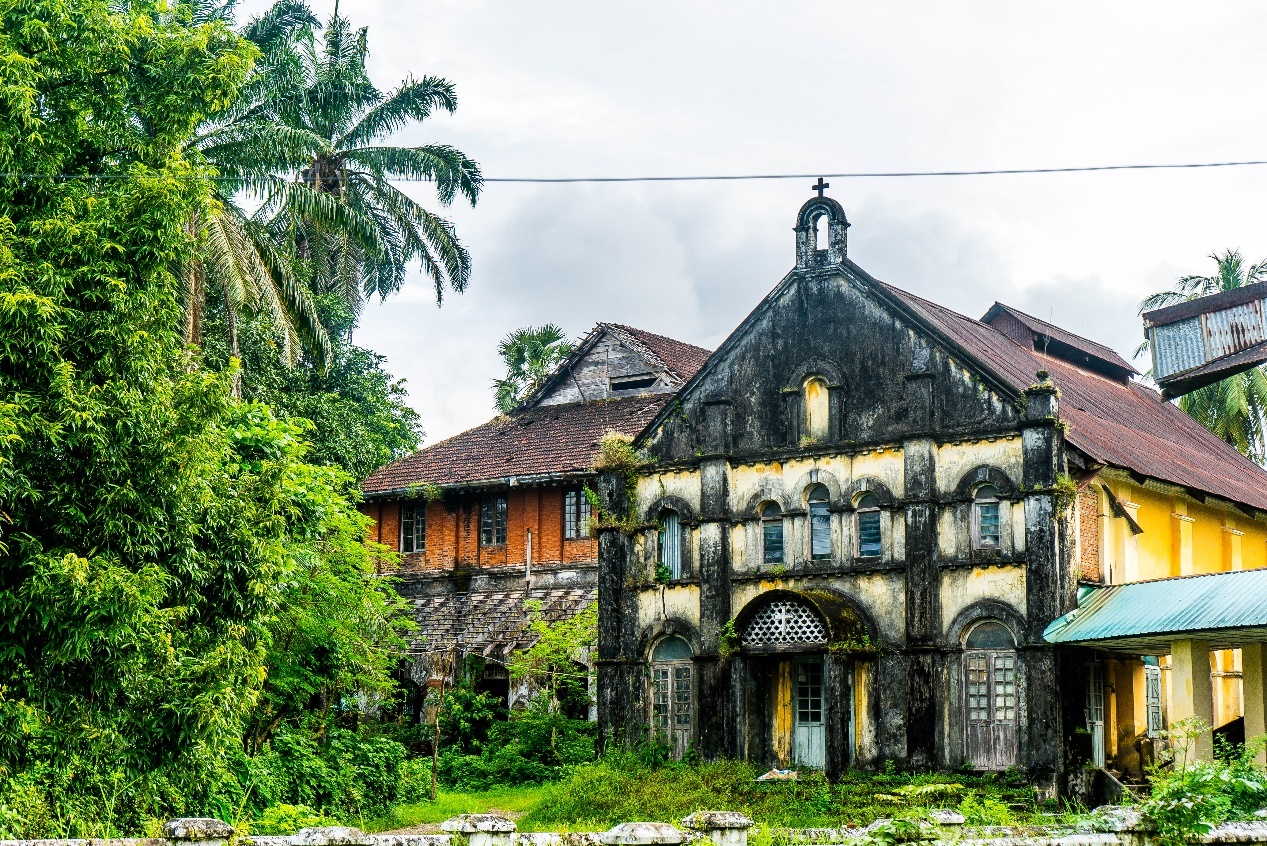
I thought it was just another abandoned building. But when I looked closer at the sign, it was the campus of Mawlamyine University, and yet it was empty, I realized it was a weekend. All I could do was look through the grey glass into the classrooms, but all I could see was shabbiness; I tried to find legible English and numbers from the various notices posted in Burmese, expecting to find a little information, but all in vain.

I was about to leave in disappointment when I bumped into someone. I thought he was a student by looking at his baby face, but found out that he was the teacher here. Unfortunately, he teaches Burmese rather than English, so he only speaks simple English too. He said that the majors here are Burmese, English, and History, almost all of which are arts due to the conditions, and the only science subjects are Math, Computer, and the newly opened Physics. We talked about education in Myanmar and he said that Myanmar university students study hard because they know that this is the only chance to change their fate. Compared to Myanmar’s economy, Burmese people’s access to education is not bad, and the illiteracy rate is far lower than in similar countries. When he said this, he had a look of pride and hope in his eyes.
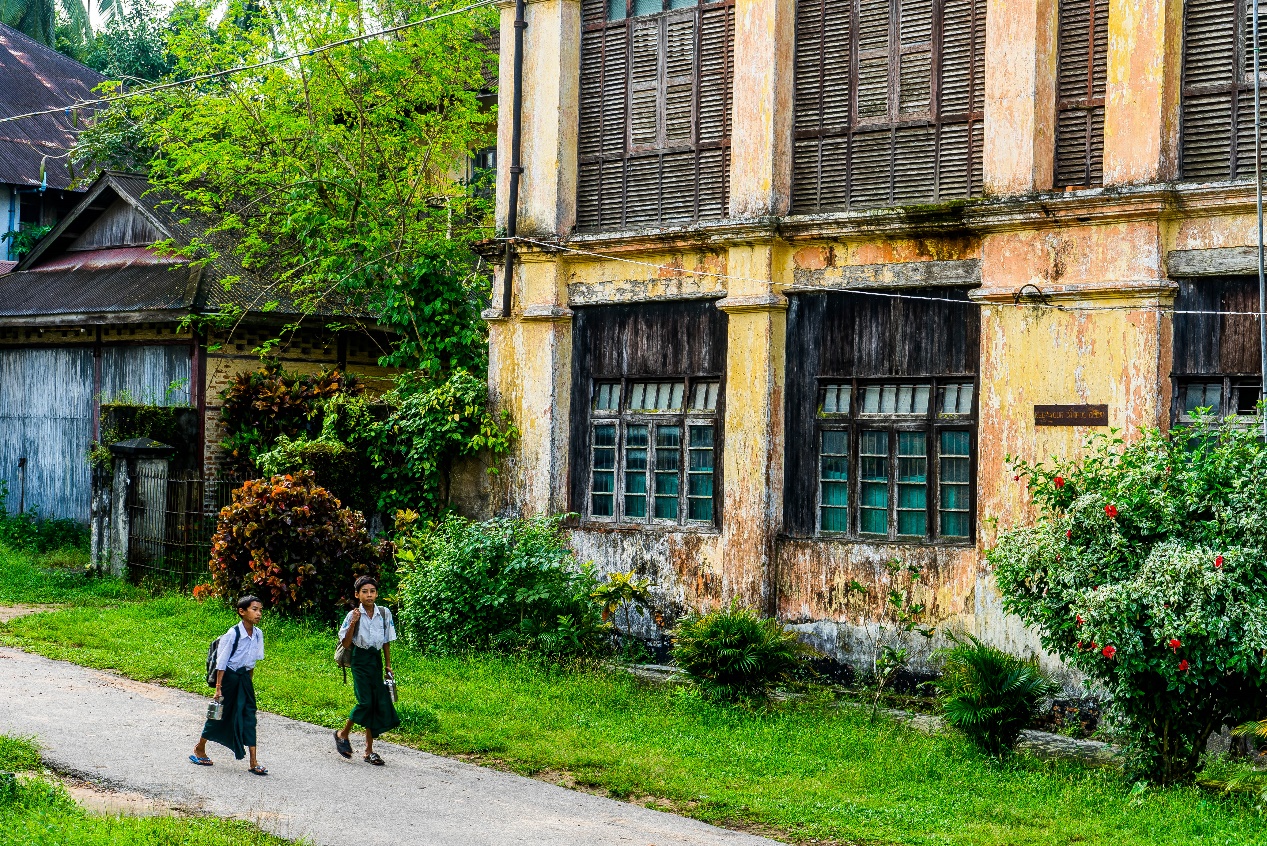
Although I suppose the standard of education in this environment and taught by such young teachers cannot help but raise a question mark. But at least it gives young people something to read and something to learn. I thought of the public library in Mawtamyine, which I had just unwittingly entered. Although the room was unsurprisingly dilapidated and dark, the books were neatly stacked and there were even computers to use, while the simple tables and chairs were filled with people eager to learn.
Along the way, I saw the same scene in downtown Yangon, and many other places in Myanmar. Libraries, simply the only satisfying, even surprising, public service I saw of the various humble ones. Suddenly I remembered the picture of the wide-eyed girl from Project Hope that I used to see when I was a child, and that thirst for knowledge must be in the eyes of many people in Myanmar now. I don’t know if you have noticed, but the words “Project Hope” have been quietly disappearing for a long time. It’s not because people don’t care about education anymore, but because the vast majority of children in our country have the opportunity to get an education.
Tomorrow in Myanmar will surely be the same.

